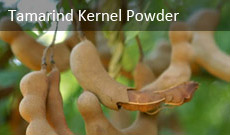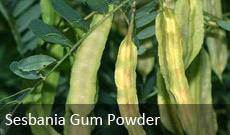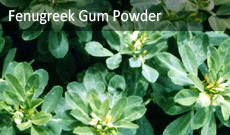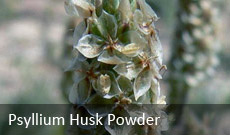The process used to produce Refined Cassia Gum Powder consists of separating the germ and split from the seed’s outer husk. In the process, the husk becomes brittle and is removed. High-temperature processing separates the split from the husk and germ particles, leaving only the solid portion. This product is used, for a variety of different applications, including cooking, baking, and medicinal purposes.
Details on Cassia Gum Powder
Cassia gum has a high number of galactose side chains, which prevent a synergistic gelling effect with anionic polymers. This gum is commonly used in pasta, meat products, poultry, and pet foods, and is also found in cheese-creme fillings and animal feed products. Because it does not interact with the protein, it helps keep the dough and pastry crusts crisp.
To make Cassia gum, seeds are first roasted. This process enables the endosperm to be separated from the husk. Then, the splits are subjected to mechanical and thermal cleaning procedures to make them homogeneous and pure. In both cases, the endosperm is left intact, so the husk and germ are separated. The final composite sample is tested for quality to ensure that it meets the specifications for Refined Cassia gum.
Applications of Refined Cassia Gum Powder
Refined Cassia Gum Powder is a great ingredient for making wet canned pet food. Its unique properties enable it to stabilize a variety of food products, such as wet canned foods and canned meat. Compared to other types of gum, it is more stable and economical to use. The European Commission has approved the use of this gum as an additive in feed with moisture content under 12%.
Refined Cassia Gum Powder is made from a cassia seed that has undergone a variety of mechanical processes. Its high galactose content restricts the use of other galactomannans in food products. It is a highly effective agent for the stabilization of animal products. This food ingredient can be added to your favourite foods. Its natural properties and high-quality properties make it a great addition to your recipe.
Refined Cassia gum is used in many cosmetics and has similar properties to guar gum. It is an excellent replacement for guar gum, which can be expensive and difficult to work with. In addition to its chemical properties, it is also very resistant to water, so it is an ideal ingredient for a variety of cosmetic products. Its chemical properties make it a good alternative to guar gum, and are highly valued in the food industry.
Refined Cassia gum is a natural thickening agent. Its high galactose content means that a small amount of the product is required to create the same effect as one made from carrageenan. Because of its high level of galactose, Refined Cassia Gum powder is an excellent alternative to guar gum. It also has a softer texture than its unrefined form, and is a good option for pet foods. It is free of chrysophanic acid and is widely accepted by consumers. It is a safe alternative to synthetic products that contain high amounts of mannose and xanthan. However, a few factors should be considered when choosing a powder. The main advantage of this product is that it contains low levels of mannose.
Bottom Line to Cassia Gum Powder
Refined Cassia gum powder contains mannose and galactose units. It is a natural thickening agent and can be used in various food applications. Refined Cassia Gum Powder is an excellent option for a variety of uses, including animal feed. In animal feeds, it can act as an additive. Further, it is an excellent choice for many cosmetic products. If you’re looking for a quality, standardized product, you should look for a company that makes it.
Refined Cassia Gum powder is the same as cassia gum E427. It is used in pet food as a thickening agent. The granules are non-toxic and provide a smooth texture. It also makes the food more digestible and palatable. It is the most popular type of Cassia gum, and the most commonly used product is the refined version.















